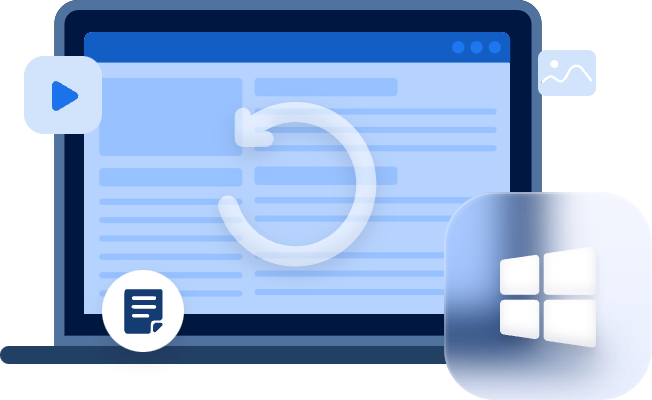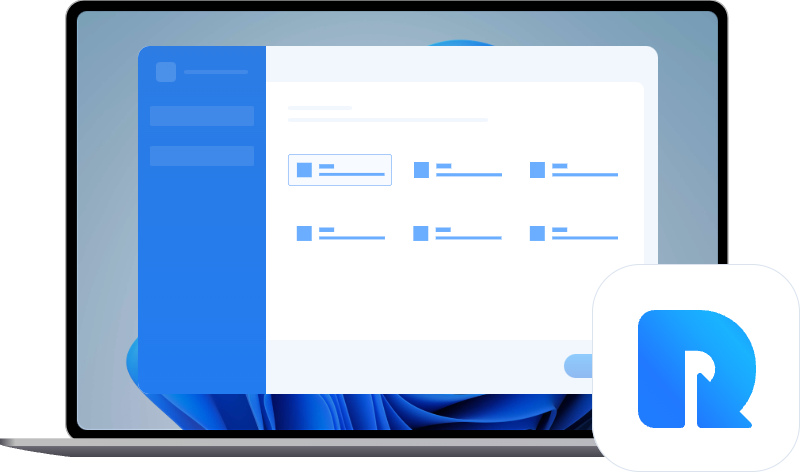Troubleshooting Default Boot Device Missing or Boot Failed Errors
Discover practical solutions to address the "Default Boot Device Missing or Boot Failed" error. Explore the root causes of boot failures, assess potential risks, and learn step-by-step techniques to retrieve missing default boot devices. Enhance your knowledge of data recovery with MyRecover.
Imagine the frustration of powering up your computer only to encounter the ominous message: "Default Boot Device Missing or Boot Failed." In this scenario, you're faced with the daunting challenge of diagnosing and resolving boot failures to regain access to your system and critical data.
Possible Reasons for Default Boot Device Missing or Boot Failed:
The "Default Boot Device Missing or Boot Failed" error can stem from various underlying causes:
Corrupted Boot Configuration: Damage or corruption to the boot configuration data (BCD) can disrupt the system's ability to locate the default boot device.
Hard Drive Issues: Physical damage, logical errors, or hardware malfunctions within the hard drive can prevent successful booting.
Misconfigured Boot Order: Incorrect settings in the BIOS boot order may cause the system to attempt booting from an invalid or non-existent device.
Potential Risks of Missing Default Boot Device or Failed Boot:
Encountering the "Default Boot Device Missing or Boot Failed" error poses significant risks, including:
Data Loss: Inaccessibility to the default boot device may result in the loss of critical files and documents stored on the system.
System Instability: Persistent boot failures can lead to system instability, impacting overall performance and reliability.
Productivity Disruption: The inability to access the computer hampers productivity, affecting work efficiency and personal tasks.
Feasible Fixes to Retrieve Missing Default Boot Device or Failed Boot:
To address the "Default Boot Device Missing or Boot Failed" error, consider the following troubleshooting steps:
1. Verify BIOS Boot Order:
Restart the computer and enter the BIOS setup utility by pressing the designated key during startup (typically Del, F2, or F10).
Navigate to the Boot menu using the arrow keys.
Ensure that the hard drive containing the operating system is listed as the first boot device.
Save changes and exit the BIOS setup utility (usually by pressing F10) to reboot the system.
2. Repair Boot Configuration:
Insert the Windows installation media or recovery disk and restart the computer.
Boot from the installation media and choose the "Repair your computer" option.
Select "Troubleshoot" > "Advanced options" > "Command Prompt."
In the Command Prompt window, type the following commands and press Enter after each:
bashCopy code
Restart the computer after executing the commands and check if the issue is resolved.
3. Test Hard Drive Health:
Download and install a reputable hard drive diagnostic tool such as CrystalDiskInfo or HD Tune.
Launch the diagnostic tool and select the target hard drive.
Run a comprehensive scan to assess the health and integrity of the hard drive.
Take note of any reported errors or warnings and proceed with appropriate troubleshooting steps.
4. Check Cable Connections:
Power off the computer and disconnect the power cable.
Open the computer case and locate the cables connecting the hard drive to the motherboard.
Ensure that the SATA or IDE cables are securely connected to both the hard drive and the motherboard.
Reconnect any loose cables and check for physical damage or wear.
Close the computer case, reconnect the power cable, and restart the system to check for improvements.
Recovering Missing Files after Retrieving Boot Device with MyRecover:
MyRecover offers advanced features for seamless file recovery, including:
Deep Scan Capabilities: MyRecover conducts thorough scans of storage devices to locate and recover missing files, including those affected by boot failures.
File Preview Functionality: Users can preview recovered files before initiating the recovery process, ensuring the selection of relevant data.
Selective Recovery Options: MyRecover enables users to selectively recover specific files or directories, optimizing efficiency and organization.
Steps to Recover with MyRecover:
Download and install MyRecover on the computer.
Launch MyRecover and select the target storage device for scanning.
Initiate a deep scan to identify and recover missing files affected by boot failures.
Preview the recovered files to validate their integrity and relevance.
Select the desired files for recovery and designate a destination folder for restoration.
Complete the recovery process, granting access to recovered files with ease.
In Conclusion:
Navigating boot failure issues requires a comprehensive understanding of underlying causes and effective troubleshooting techniques. By implementing the strategies outlined in this guide and leveraging tools like MyRecover, users can overcome boot failures, retrieve missing default boot devices, and safeguard critical data with confidence.
FAQs:
1. Can boot failures result from software conflicts or malware infections?
Yes, boot failures can occur due to various software-related issues, including conflicts between installed programs or malware infections that corrupt system files essential for booting.
It's important to regularly update antivirus software, perform system scans, and ensure that all software is compatible and up-to-date to minimize the risk of boot failures caused by software conflicts or malware.
2. What steps should I take if the BIOS settings are inaccessible or locked?
If you are unable to access or modify BIOS settings due to accessibility issues or locking mechanisms, try resetting the BIOS to its default configuration.
You can typically reset the BIOS by removing the CMOS battery from the motherboard for a few minutes and then reinserting it. This action resets the BIOS settings to their factory defaults, allowing you to access and modify them as needed.
3. Are there alternative methods for accessing data if the hard drive is physically damaged?
If the hard drive is physically damaged and inaccessible through conventional means, such as booting into the operating system, you can consider using specialized data recovery services or software.
Professional data recovery services may offer advanced techniques for retrieving data from physically damaged hard drives, while data recovery software like MyRecover can attempt to recover files from damaged sectors or partitions using advanced algorithms.
4. Can MyRecover recover files from external storage devices or network drives?
Yes, MyRecover is designed to recover files from a variety of storage devices, including external hard drives, USB flash drives, memory cards, and network drives.
As long as the external storage device is accessible by the computer and recognized by the operating system, MyRecover can scan and recover files from it, regardless of the storage medium or location.
5. How can I prevent future boot failures and ensure system stability?
To prevent future boot failures and ensure system stability, consider implementing the following preventive measures:
- Regularly update and maintain antivirus software to protect against malware and viruses.
- Perform regular backups of important data to prevent loss in the event of hardware or software failures.
- Monitor system health and performance using diagnostic tools to identify potential issues before they escalate.
- Keep the operating system and software applications up-to-date with the latest security patches and updates.
- Handle hardware components with care to prevent physical damage, and ensure proper ventilation and cooling to prevent overheating.



